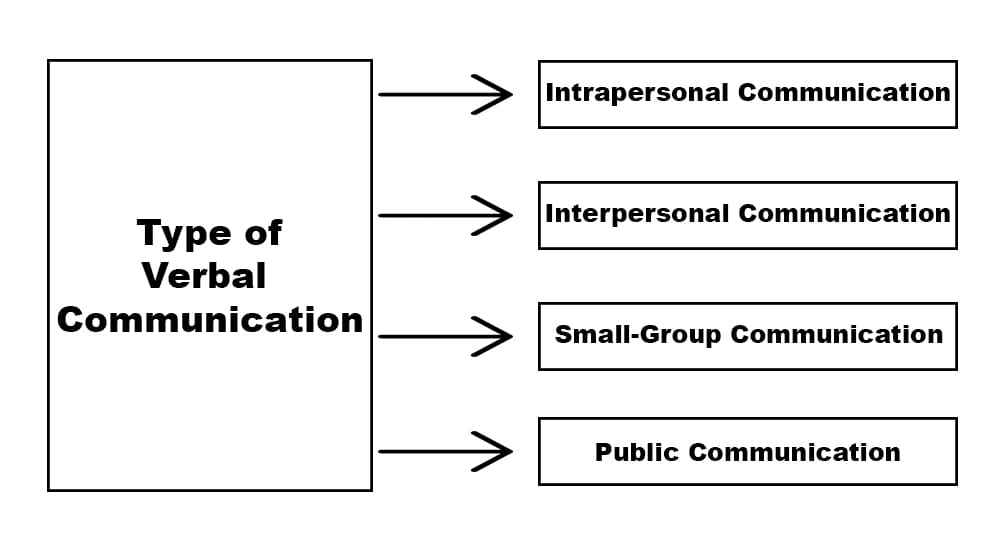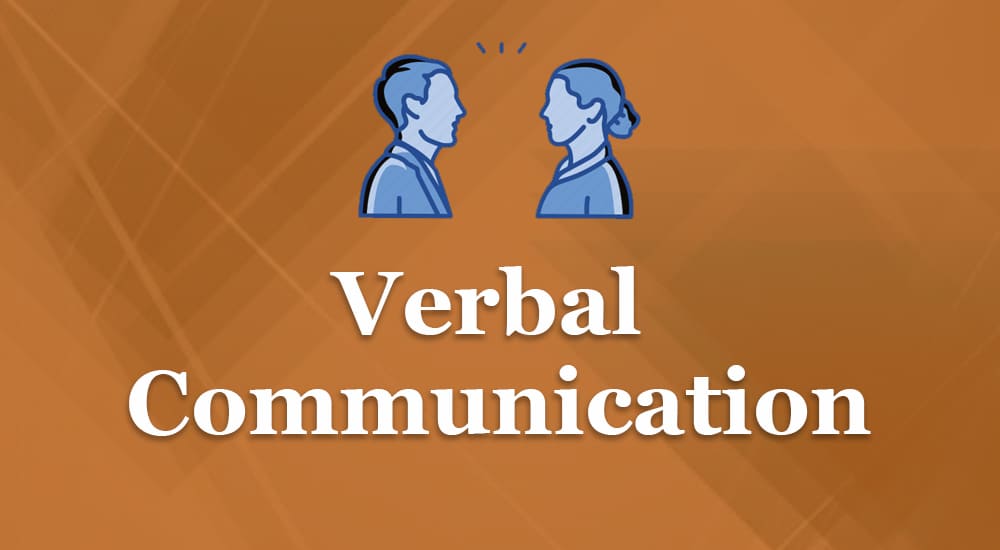Definition: Verbal communication is oral communication, where thoughts are transferred orally. It includes speech, words, sounds, etc. A sender can transfer the message verbally through speaking.
A sender can express their ideas verbally through one-to-one discussion, one-to-many discussion, presentation, public speaking, etc.
The effectiveness of verbal communication depends on the speaker’s body language, tone, choice of words, etc.
Verbal communication mostly falls under informal communication. For formal communication, businesses use written communication.
Types of Verbal Communication

Verbal communication can be of four types:
- Interpersonal Communication
- Intrapersonal Communication
- Small-Group Communication
- Public Communication
Interpersonal Communication: This is one-to-one communication. Here, two people are involved in communication. One person will be the sender, and the other is the receiver. The position interchanges during the conversion.
Intrapersonal Communication: This communication stays with oneself. It includes talking to oneself, thinking, etc. This is a private communication and is limited to the person who is thinking.
Small-Group Communication: If more than two people are involved in communication, it is small-group communication. Meetings, group discussions, and team meetings are a few examples of small-group communication.
Public Communication: When one person communicates with a large crowd or public gathering, it is public communication. An election campaign is an example of public communication.
Benefits of Verbal Communication
- It is the easiest method to communicate the message.
- The sender has a chance to influence the audience.
- It provides immediate feedback.
- There is less chance of noise.
- It is flexible.
Drawbacks of Verbal Communication
- Psychological barriers can affect verbal communication.
- The receiver has not had enough time to think and respond.
- Most times, it is not suitable for formal communication.
Summary
Verbal communication is the most common form of communication, and people use it to transfer a message orally. This communication conveys feelings and expression better than any other form of communication.
